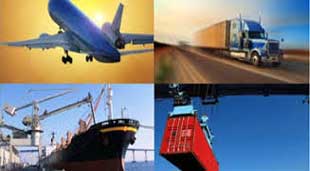Both the now House and the US Senate have passed a $1 trillion infrastructure bill, sending the legislation to President Joe Biden for his signature that will finalize the new law.
The trillion dollar price tag is a little deceptive. It really will cost about $550 billion in new spending above what Congress was already planning to allocate for infrastructure over the next eight years. That new spending will also play over many years.
Supply Chain Digest Says...
|
 |
| The Congressional Budget Office’s score found it would instead add billions of dollars to the deficit over 10 years |
 |
What do you say? |
| Click here to send us your comments |
|
 |
| Click here to see reader feedback |
|
But even by federal government standards, $550 billion is a lot of money to dole out.
So where is the money going? At a high level, the measure includes significant investments in roads, bridges, railways and broadband internet.
Based on reports from the Associated Press, NPR and sources, below is a summary of where the funds are headed in different areas.
Roads, bridges, and major projects: $110 billion - The Biden administration says 173,000 total miles or nearly 280,000 kilometers of America’s highways and major roads and 45,000 bridges are in poor condition and in desperate need of repair. And the nearly $40 billion for bridges alone is the single largest dedicated bridge investment since the construction of the national highway system.
Passenger and freight rail: $66 billion – Much of funding will go to upgrades for Amtrak, which has a growing maintenance backlog. The Northeast Corridor (457 miles) and other routes will get upgrades. It will be the largest federal investment in passenger rail service since Amtrak was founded 50 years ago.
Public transit: $39 billion - The money will expand various transportation systems, improve accessibility for people with disabilities and provide funds to state and local governments to buy zero-emission and low-emission buses. The Biden DOT says that the current repair backlog is more than 24,000 buses, 5,000 rail cars, 200 rail stations and thousands of miles of track and power systems.
Airports: $25 billion - The bill provide $25 billion to improve runways, gates and taxiways at airports and to improve terminals. It would also fund upgrades of aging air traffic control towers.
Port infrastructure: $17 billion – This money will address port repair and maintenance backlogs, reduce congestion and emissions near ports and airports, and promote electrification and other low-carbon technologies.
Transportation safety programs: $11 billion – The money will go to the first ever Safe Streets and Roads for All program to support projects to reduce US traffic fatalities.
(See More Below)
|
CATEGORY SPONSOR: SOFTEON |
|
|
| |
|
|
 Electric vehicles: $7.5 billion – Much of this spend will go for electric vehicle charging stations, which the Biden administration says are critical to speed up adoption of electric vehicles, hoping to reduce CO2 emission . It also will spend $5 billion for the purchase of electric school buses and hybrids. Electric vehicles: $7.5 billion – Much of this spend will go for electric vehicle charging stations, which the Biden administration says are critical to speed up adoption of electric vehicles, hoping to reduce CO2 emission . It also will spend $5 billion for the purchase of electric school buses and hybrids.
Modernizing the Electric Grid: $65 billion – As indicated, these funds will be used to improve the reliability and resiliency of the US power grid. It would also boost carbon capture technologies and more environmentally friendly electricity sources such as clean hydrogen.
Revitalization of communities: $1 billion – This money will be used mainly in disproportionately Black neighborhoods that were divided by highways and other infrastructure in the past. It will fund planning, design, demolition and reconstruction of street grids, parks or other infrastructure.
Internet Access: $65 billion – The money will be used primarily to improve internet services for rural areas, low-income families and Native American communities, most flowing through grants to states.
Water and Wastewater: $55 billion - $15 billion of that will be used to replace lead pipes and $10 billion to address water contamination caused by polyfluoroalkyl chemicals, used in the production of Teflon and many other products.
How will all this spending be paid for? The White House says the spending package would tap into $210 billion in unspent COVID-19 relief aid and $53 billion in unemployment insurance aid some states have halted, among other sources to pay for all the spending.
However, the Congressional Budget Office’s score found it would instead add billions of dollars to the deficit over 10 years and that many of the pay-for provisions would not raise as much money as Democrats say they would.
What are your views of this bill? Let us know your thoughts at the Feedback section below.
|